
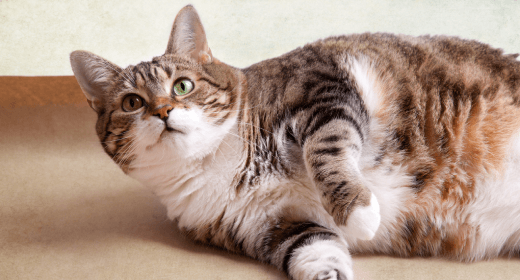
Let’s start by asking – would you realize if your cat needed to cut down?
You know your cat is purr-fect. It’s fluffy and has a paunchy belly. But so, what? It could also imply that it is perfectly healthy. Naturally, you may not understand if your fluffball is on the portly side. In fact, overweight cats now appear to outnumber those who have a healthy weight.
Overfeeding your cat is a big no-no. Even a few additional pounds can increase your cat’s risk of developing certain health conditions, such as type 2 diabetes. It may even prevent your cat from grooming itself properly. Therefore, keeping your cat in shape is crucial to maintain its health, and help it live longer and happier. Well, the good news is that by making some simple dietary and exercise changes, you can assist your overweight cat in losing weight.
Obesity is becoming more prevalent in cats, just as it is in humans. It can have long-term consequences on a cat's health, quality of life, and body functioning. Therefore, obesity in cats must be addressed immediately, as it is linked to serious health problems. Here are the risks of cat obesity:
When your cat becomes overweight, its immune system gets weakened, leaving it more susceptible to infection. This includes urinary infection as well as 'stones,' which are caused in overweight cats because they’re less active, drink less water, and urinate lesser than healthy cats.
Around 80% to 90% of obese cats require daily insulin shots as they are more likely to develop diabetes. But, when their excess weight is eliminated, diabetes can often be reversed.
When your cat’s body senses that it is undernourished, for instance, if a regular food supply is interrupted, the fat is moved from reserves into the liver to be used as energy. But a cat’s body is unable to efficiently control this process, resulting in poor liver function and liver failure.
Cats with excess weight have a harder time grooming themselves, which can contribute to skin problems.
Here is a chart for you to understand better –

After you get your overweight cat in shape, your goal must be to maintain it for its good health and longevity. Here are some things you should avoid doing to keep your cat from becoming overweight:
You should avoid free -feeding your cat to prevent it from becoming obese. Set up definite feeding times and keep treats to a minimum.
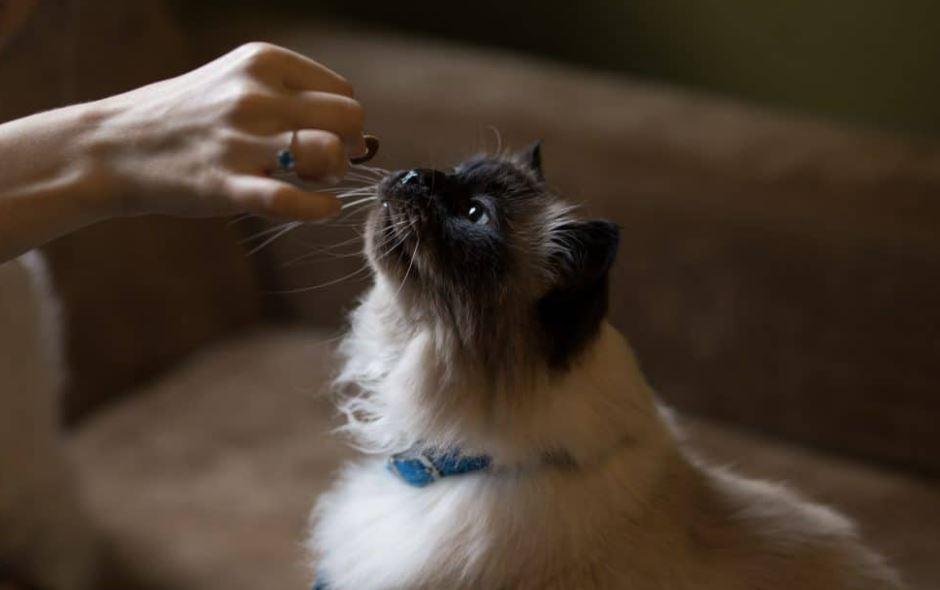
Your cat is at even more risk of becoming overweight if it does not engage in any outdoor activity. To avoid boredom and prevent weight gain, find some interesting toys, set aside playtime, and make it a priority for your indoor cat. Another approach is to go for a walk outside with your cat on a leash.
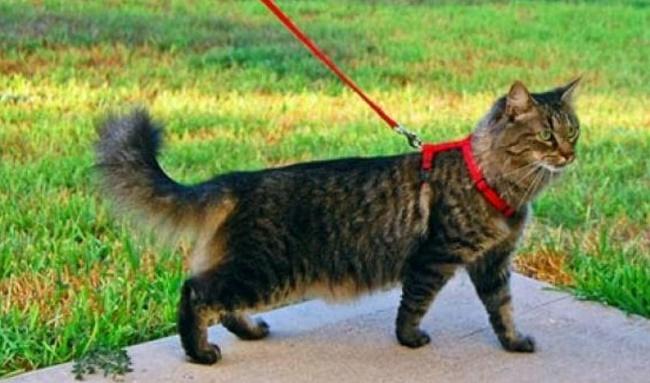
Assess how much cat food your cat truly needs with the advice of your vet, based on your cat's activity level and desired weight. Once you've calculated how much food your cat requires, measure the food for each meal. Remember that cats are little, and while the portion may appear small to you, some extra kibbles can make the difference between maintaining weight and gaining weight.
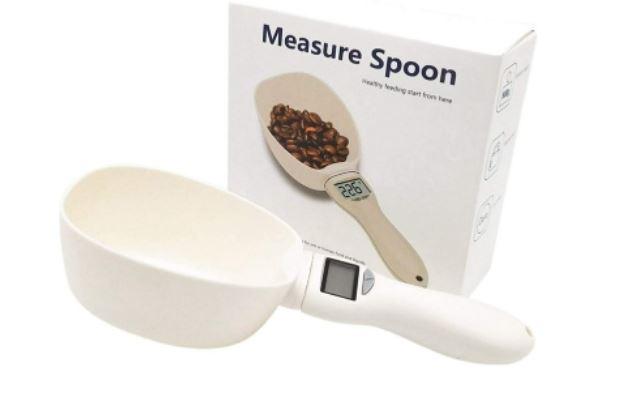
Another way to help your cat lose weight is to increase her activity. Provide cat 'trees' for climbing or teach your cat to play fetch. Buy or create your own toys that encourage exercise. Many cats enjoy chasing lights from pointers or flashlights. One ingenious owner throws her cat's dry food ration a piece at a time! Many cats enjoy learning to walk on a leash. You also can use your cat's natural hunting instinct to help her lose weight. Hide several small portions of her daily food ration around the house. If you have a multi-level home, make your cat use the stairs. Use your imagination but be cautious. Don't let a fat cat get exhausted, overheated, or out of breath. Also, keep in mind that an old cat may not be able to exercise vigorously.
Use playtime, grooming, stroking, or conversation as rewards instead of food treats. If you cannot resist the fat cat who begs for food at the dinner table, remove the cat during dinnertime. If you have a multi-cat household, the consistent winner of the food competition sweepstakes is often obese. If this is the case, separate the cats at mealtimes if possible.
Obesity is easier to prevent than to cure, but it is never too late to reverse it—though it requires long-term patience and commitment. Helping cats lose weight is a slow process. If the amount they eat is severely restricted, the cat risks other health problems.
Increased activity, behavior modification (for both you and your cat), and calorie restriction are your weapons against feline obesity. However, with all these things, it is important to expect a few setbacks and plateaus. It will take at least four months for an obese cat to lose 15% of her starting weight. At that point, have another look at your cat's body condition and go on from there.
Always check with your veterinarian first.
Eliminate all food treats.
Divide the daily food portion into several smaller meals.
Feed a diet formulated specifically for weight loss.
Weigh your cat every two weeks.
Cats should not lose more than 1% to 1.5% of initial weight per week.
Be patient and consistent!
The symptoms are:
You can treat an obese cat by helping it consume fewer calories. But before that, please consult your vet and understand the amount of weight your cat needs to shed. Also, pair some exercises along with the weight loss diet.
Obesity in cats is often linked to physical inactivity, overfeeding, long sleeping times, and indoor confinement.
You should provide canned food to your cat to help it lose weight. Cats prefer wet food to dry food, which is one of the reasons canned diet foods perform better.
If your cat is overweight, it is more likely to develop heart disease, cancer, diabetes, and high blood pressure. Excess fat has a negative effect on a cat's health and lifespan. Extra weight also puts strain on your cat's joints, which can lead to arthritis.

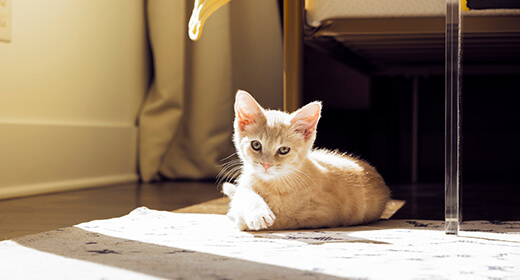
When you snuggle up to your new feline friend and notice them scratching a tad too often, it might be a sign of kitten fleas. Along with causing itching and discomfort, this dreaded parasite can also transmit diseases. In fact, during extreme cases, fleas can even cause anaemia, especially in little ones like kittens. However, don't worry, we have the purrfect guide for you to handle these pesky invaders.
Before jumping to any kitten flea remedy, you must evaluate the situation. Depending on your kitten's age and weight, your approach will vary.
Points to remember:
Kittens under 12 weeks should not be introduced to chemical flea prevention products.
Always check product guidelines to ensure they are suitable for your kitten’s age and weight.
Only use products designed for cats, as our feline friends process chemicals differently than dogs.
Comb your kitten: A fine comb can effectively remove visible fleas.
Bathe your kitten: If your kitten is of suitable age, use a flea and tick shampoo made for sensitive skin. For younger kittens, you might want to try non-medicated, tear-free soaps like a baby shampoo.
Clean the environment: Your battle against fleas isn't just on your kitten. Wash all bedding in hot soapy water and vacuum carpeted areas thoroughly. Empty vacuum bags or canisters outside. Sprays can help eradicate fleas and their eggs indoors.
Protect the Yard: Even if your kitten is an indoor kitty, fleas might sneak in from outside. Using sprays can be an effective way to safeguard your yard.
When it comes to flea treatment for kittens under 12 weeks, options can be limited. Young kittens are particularly sensitive, and many treatments suited for adult cats can be harmful to them. Here's how to proceed:
For kittens under 8 weeks old, your safest bet is to use a flea comb. This tool, when dipped in hot, soapy water between brushes, can help you physically remove and kill off adult fleas.
Another effective method for very young kittens is bathing. A gentle bath with warm water and a fragrance-free dish liquid or natural baby shampoo can be effective in reducing the flea population. However, be sure to make this a quick affair to prevent your kitten from getting overly cold or scared.
Natural sounds great, doesn't it? But here's a cat-sized caution: Avoid essential oils as a kitten flea remedy. Many essential oils are toxic to cats, even in minimal doses. Some flea treatments boasting 'natural' ingredients might contain these oils, which could pose risks for your kitten. Always read labels and, when in doubt, consult with your vet.
For kittens older than 8-10 weeks and weighing more than 1.5-2 pounds, topical treatments become an option. A golden rule here is always to ensure the chosen product matches your kitten's age and weight.
It's essential to strike a balance between effectiveness and safety. Prescription treatments from your veterinarian typically offer the most robust protection against fleas. However, there are over-the-counter options available, which might be more accessible for some pet owners. No matter your choice, the key is to read labels carefully and avoid harmful ingredients, such as permethrin and certain essential oils.
Fleas might be pesky, but with knowledge, patience, and the right tools, you can keep your kitten flea-free and happy. Always keep your veterinarian in the loop and ensure any treatment or remedy you use is age and weight appropriate. Remember, a flea-free kitten is a happy kitten!